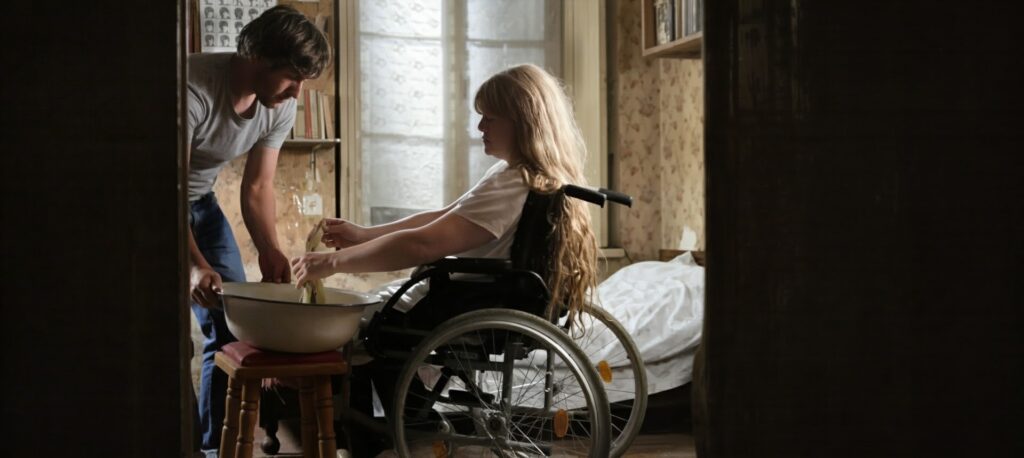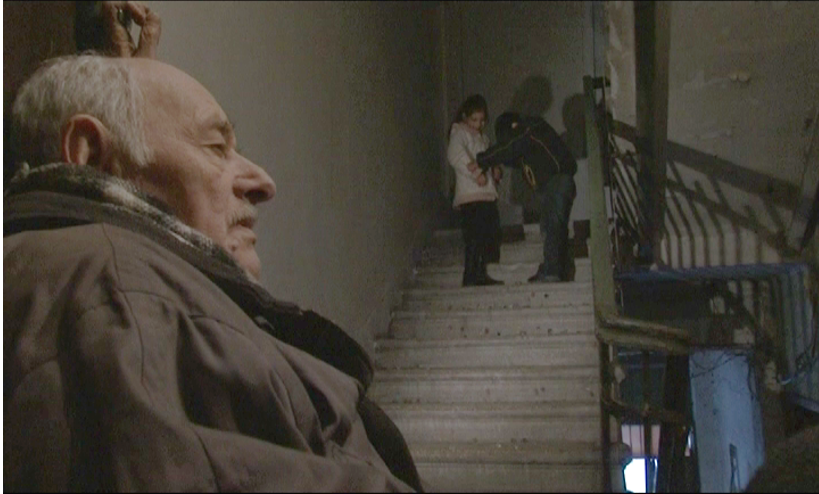Caring for a parent with disabilities which is associated with physical and emotional difficulties is a huge challenge for a child. This is inversion of roles, where the child, who should naturally feel the care of the parent, takes on the role of the guardian himself. In such a situation, everyday life turns into a continuous chain of routine duties, which includes not only physical assistance but also constant emotional support. One of the biggest difficulties is the emotional burden. The child often experiences a sense of guilt that he cannot do everything perfectly or feels injustice towards his fate. The illness of a parent and caring for him can become a cause of loneliness, isolation and limitation of social life. It is difficult for the child at this time to plan his own life, career or romantic relationships because his attention is constantly shifted to the parent.
In Kote Chabakauri’s student film “Toy Horse” (2019) a young carpenter boy takes care of his disabled mother and conveys a small part of this difficult reality. The film does not directly show all the complications but hints at the mother’s difficult situation. This relationship is also presented symbolically: the boy works, creating wooden toys, which the mother decorates with paints. This is a kind of way in which the son and mother jointly build their own little world, where each has their own function. The mother thus seems to infuse the things created by her son with a soul. This is an unusual form of their communication.
There is a special episode in the film when the mother lights a candle and prays for her son. This is a scene that, at first glance, is simple, but carries a deep emotional charge. The mother performs not only a religious, but also a personal ritual. The candle here symbolizes hope, faith, and the light that she sees in the fate of her son. Her prayer is a silent and intimate act. This is an expression of her inner world, the only way in which she can express her care and love for her child despite her physical restrictions. The climax of the episode occurs when the guest arrives. The mother's reaction, when she quickly blows out the candle, speaks of her strong emotional state. This gesture shows that the moment of prayer is so personal that she does not want anyone else to see or share it.
The director uses this scene to show the viewer the inner world of her mother and her boundless love and care. Lighting and extinguishing a candle is a quick but powerful action that says more than any dialogue. This scene evokes empathy and respect in the viewer because it shows how much effort and emotion is hidden behind one simple movement.
Often, student cinema is a kind of experimental space where novice directors reveal their vision and technical capabilities. This short film by Kote Chabakauri is a clear example of such an attempt. The strongest side of the film is its visual part, which undoubtedly deserves the attention of the viewer, however, at the same time, the script and plot development are so weak that, the film leaves the impression of only a half-fulfilled promise in the end.
The main advantage and real calling card of the film is its cinematography. In the hands of Aleksandre Sujashvili, the camera not only captures events, but also creates an emotional mood and emphasizes the characters’ inner world. The cameraman skillfully uses light and shadow to create sophisticated and visually harmonious shots. The camera often focuses on details: on the carpenter's hands, which bring toys to life. These shots emphasize the character's hard work and attitude to the craft. In these moments, the film is silent, speaking without words and offering the viewer a unique aesthetic experience. The lighting and composition are so harmonious that watching the film for the viewer becomes a pleasure. Each shot is carefully thought out as an independent work of art.
Despite the visual brilliance, the film's main weakness is its content. The plot is too schematic and predictable. A young, kind, hardworking boy who takes care of his mother and creates works of art makes the impression of banality. The characters’ motivations and actions are superficial. It is clear that the son loves his mother and works hard, but his inner conflicts, dreams or fears are not understood. He is just a one-dimensional figure who embodies goodness.
The character of the girl is even less presented. She appears in the film only to develop the plot. The broken toy horse is an awkward excuse for asking for help and, therefore, for the emergence of romantic interest. Their relationship develops too quickly and lacks conviction. The love that seems to appear at one glance, appears to be unsupported by dialogue, common interests, or a deep emotional connection. Because of this, their meeting and subsequent love story looks artificial.
The weakest point of the plot is that it does not offer the viewer any surprises or intriguing situations. Every scene unfolds as the viewer would have guessed from the very first minute. The film does not delve into the characters’ psychological depths or the world around them. It is limited to telling an idyllic but boring story.
The film leaves the impression that the director was so fascinated by the visuals that he thought less about the content. This is a perfect example of how sophisticated technical performance, such as cinematography, cannot save a weak script. The film had the potential to be an emotionally charged story about human relationships, craftsmanship, and love but instead it remained just a collection of beautiful but emotionless shots. This is an important lesson for any aspiring filmmaker: visual beauty, cinematography, and directing talent, if not combined to serve a strong and compelling story, will only produce a half-produced result. Nevertheless, the creators of this short film can be proud of the fact that they have created a visually striking work that speaks volumes about their creative potential in the future.
Salome Gogoli






